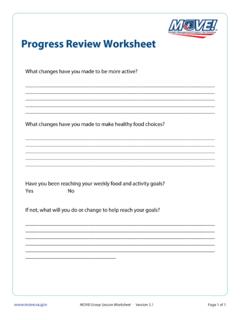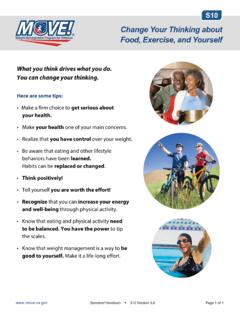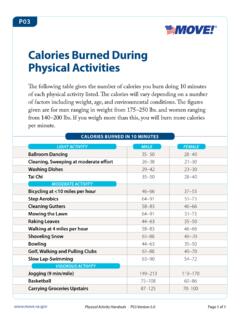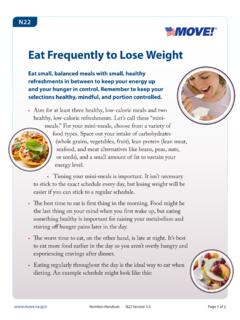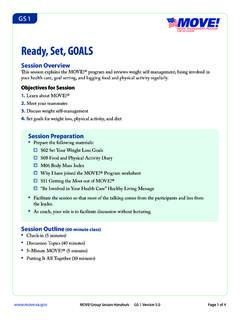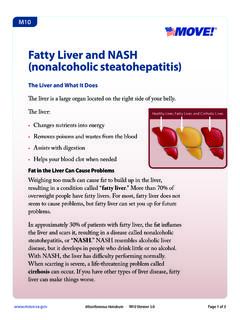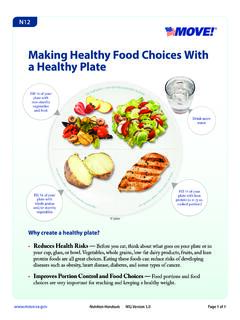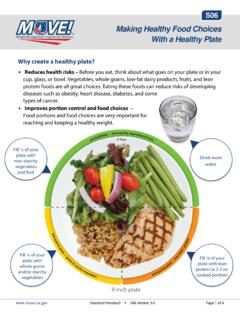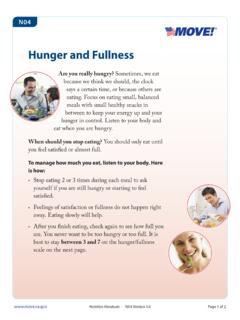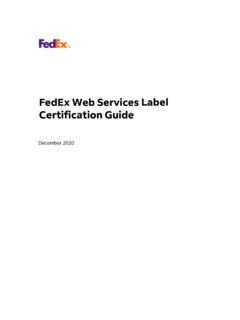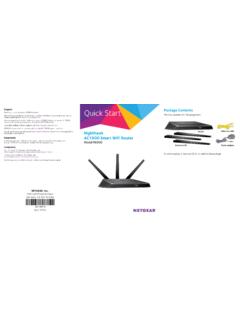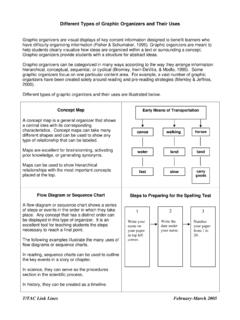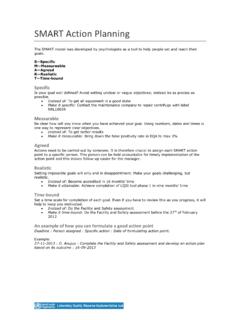Transcription of How to Read a Food Nutrition Label - Veterans Affairs
1 Handouts N10 Version 1 of 1 How to Read a Nutrition Facts LabelUnderstanding what the Nutrition Facts Label means can help you make smart food choices that are best for your health. 1 Serving Size & Servings Per ContainerWe re used to saying portion or helping when we talk about how much we eat. Serving size is the official term used on food labels. Nutrition facts given on the food Label are based on one serving. Be sure to look at the number of servings in the container. Even small containers may have more than one serving. If you eat the whole container, then you must multiply the Nutrition values by the number of servings in the container. 2 Amount of CaloriesThe calories listed are for one serving of the food. Keep in mind your total daily calorie needs. Calories from fat tells how many fat calories there are in one serving. Remember, a product that is fat-free isn t necessarily calorie-free.
2 3 *Percent Daily Values (DV)This section tells you how the nutrients in one serving of the food contribute to your total daily diet. Use it to choose foods that are high in the nutrients you should get more of, and low in the nutrients you should get less of. Tip: 5% DV or less is low, 20% or more is high. You will not find a % DV for trans fat, Sugars, or Protein (refer to the bottom box for Percent Daily Values for a 2,000 and 2,500 calorie diet). 4 Limit these NutrientsEating too much total fat (especially saturated fat and trans fat), cholesterol, or sodium may increase your risk of certain chronic diseases, such as heart disease, some cancers, or high blood pressure. Limit these nutrients. 5 Get Enough of These NutrientsAmericans often don t get enough dietary fiber, Vitamin A, Vitamin C, Calcium, and Potassium in their diets. Look for choices that have at least1 gram of fiber. Aim for 20 35 grams of fiber per day.
3 Compare the number of grams (g) of sugarsto the number given for Total this food has natural sugar, like thatin fruit or milk, these sugars are added.
